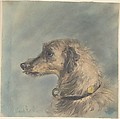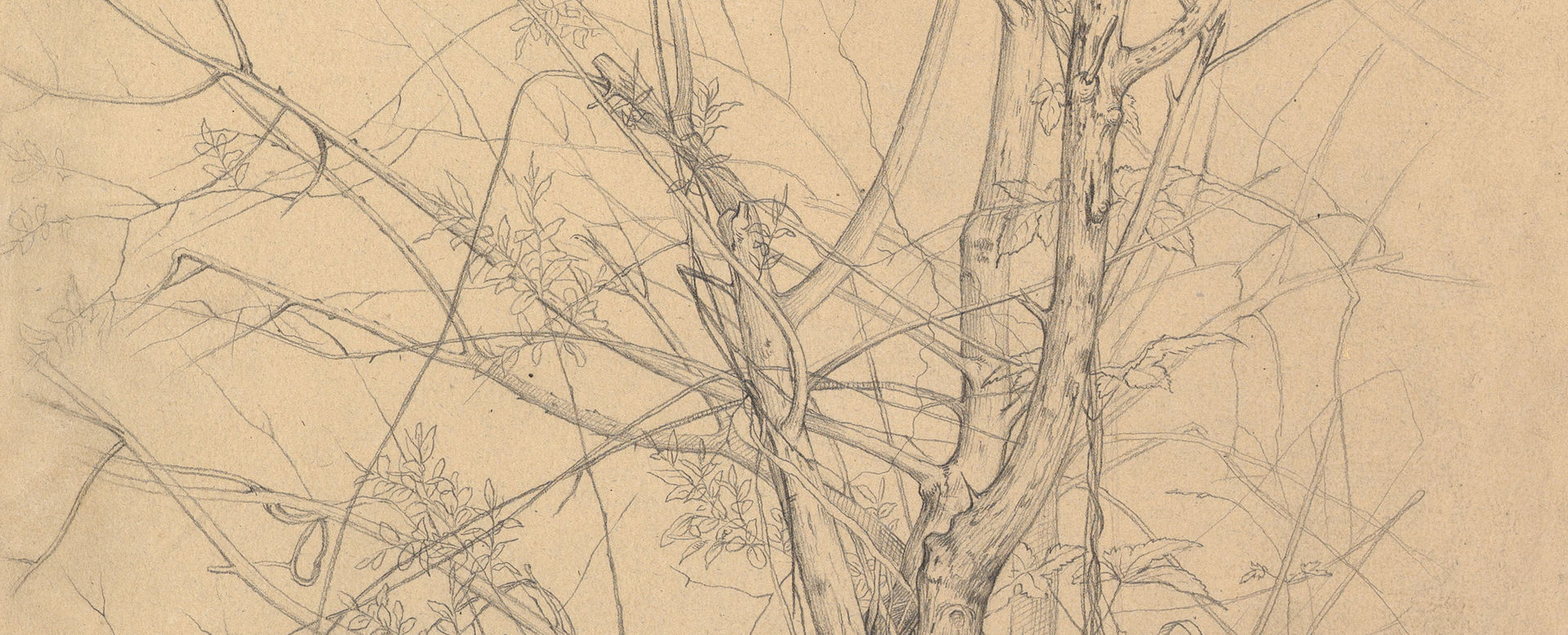Head of a Scottish Deerhound, after Landseer's "Hafed"
Maud Earl British
After Sir Edwin Henry Landseer British
Not on view
Earl here uses watercolor to reproduce a work that the great Victorian animal painter, Sir Edwin Landseer, made in 1835 of a favorite deerhound. Shown in profile, the dog extends its tongue slightly and wears a ringed leather collar. Several printmakers had reproduced the image during the nineteenth century, and a painting, attributed to Landseer, is now at Lotherton Hall, part of Leeds Museums and Galleries. Since the color scheme of the present work echoes that of the Leeds painting, we must assume that the artist worked from a colored model rather than a monochrome print.
Born into a family of animal painters, Earl became a canine artist at a time when few women succeeded as professionals. Her father George Earl (1824-1908) taught her at the outset and emphasized drawing from life and studying skeletons to master animal anatomy. Further study at the Royal Female School of Art enabled Earl to debut at the Royal Academy in 1884. She then became an admired painter of dogs and received commissions from the royal family. When World War I severely impacted British cultural life, she emigrated to New York. This watercolor once belonged to the leading American sculptor Anna Hyatt Huntington, who bred deerhounds on her Connecticut estate and often portrayed them. Huntington also gave the Met an etching by John Cother Webb (1855–1927) after Landseer's "Hafed" (see 1974.672.19). The precision of Earl's watercolor copy communicates her reverence for a prominent predecessor.
Due to rights restrictions, this image cannot be enlarged, viewed at full screen, or downloaded.



